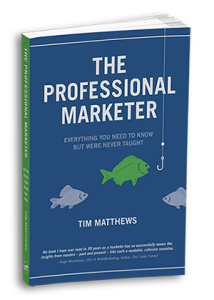Estimated Reading Time: 3 minutes
I work in the software industry – SaaS specifically – and online customer acquisition is a hot topic these days. Getting prospective customers to use your software before talking to a sales person benefits both sides. Customers get to try out a product on their own terms and schedule. Salespeople can work more efficiently by talking only to those customers who are ready to buy.
 There are two models for acquiring customers this way: freemium and free trial. Freemium is a model where customers are provided with a useful piece of software for free, with the option to purchase advanced features if they so desire. Free trials allow users to try out a piece of software for some period of time (usually a few weeks to a month) and then decide if they want to buy it.
There are two models for acquiring customers this way: freemium and free trial. Freemium is a model where customers are provided with a useful piece of software for free, with the option to purchase advanced features if they so desire. Free trials allow users to try out a piece of software for some period of time (usually a few weeks to a month) and then decide if they want to buy it.
I think the distinction is pretty straightforward, but I’ve had a few conversations recently where people were asking me about freemium when they really meant free trial. In trying to figure out why, I’ve come up with a few possible answers. One is that people aren’t really sure which one they mean and use freemium as a catchall for any kind of free use of software. The other is that there are now blends of free trial and freemium out there in the wild, which I will explain below, and people are getting confused. The cynic in me says that there is a third possibility: people just like to spout cool buzzwords.
Whatever the reason for the confusion, when it comes to selling SaaS applications, I feel there are clearcut reasons for using freemium, free trials, and the blended version. Here’s my take.
Freemium
Freemium works best when there is an advantage in the numbers. Lots of users is good if your revenue model is based on selling advertising or achieving a critical mass for social networking reasons. LinkedIn, which I started using for free, is a great example. Having lots of users fuels the value of LinkedIn. It allowed them to have something valuable to sell to recruiters, and gave them lots of eyeballs to view ads. I upgraded my account after a period of time to get the ability to directly message other members,which I still use for business development. Another take, now in vogue, is the capacity cap employed by cloud storage vendors like Dropbox and Box. They offer a free version with a cap on capacity, hoping that users will get hooked and eventually need to upgrade to get more storage capacity.
Free Trial
Free trial is a better bet when you have a SaaS application and a straightforward monthly subscription revenue model. The goal is to get customers up and running quickly, expose them to your great features, and let the product sell itself. In the enterprise software world, you are essentially shortcutting old meeting/demo/pilot sales process. This wasn’t really possible before SaaS. You used to have to find a machine, schedule a time to install software, configure the software, train the users, etc. This was especially hard in regulated environments like banks, where touching anything in the data center required approvals from the right people. But now, just sign up and go. Salesforce and Zendesk are great examples of how to do free trials right. They both offer multiple editions of their products and use one of the more advanced editions for the free trial. Better to entice new customers. At the end of the trial, SaaS vendors are thinking you will stick with the version you tried – which is not the cheapest offering.
Free Trial to Freemium
Free trial to freemium is the blend I mentioned. Just like any free trial, the vendor offers you one of their premium versions for a limited time. After the trial, if you decide you don’t want to pay, you are reverted to the free version, which has fewer features and perhaps other limitations. But you still get to use the product, so there’s nothing to lose by trying the advanced version New Relic is a good example of a company that sells this way. What I can’t say is whether this psychological ploy helps free trial conversion rates. I would love to know.
In my experience, picking freemium or free trial falls right out of the business model. From a marketing execution standpoint, succeeding with the model you choose takes lots of work and iteration. Small tweaks to offers and lots of testing get you incremental improvements that continue to up your conversion rate, and ultimately your customer acquisition rate.
 Want to learn even more about marketing?
Want to learn even more about marketing?
Great article! I just discovered your blog and it’s full of very interesting ressources. You’re now in my RSS Feed. I wrote an article about Free Trial in SaaS and it looks as a good complement to your article. Here is the link: http://www.pierrelechelle.com/saas-free-trial
I look forward reading another of your post.
Thanks, glad you liked it.